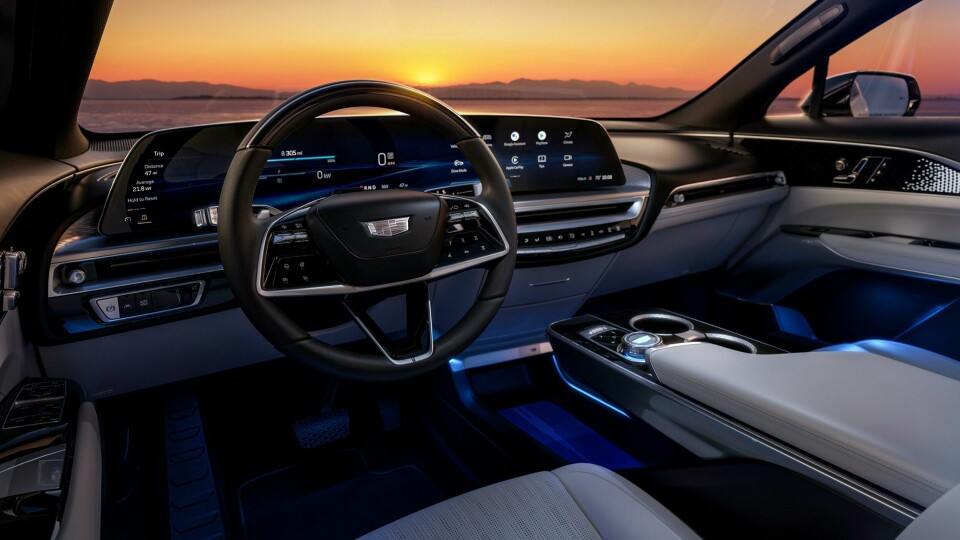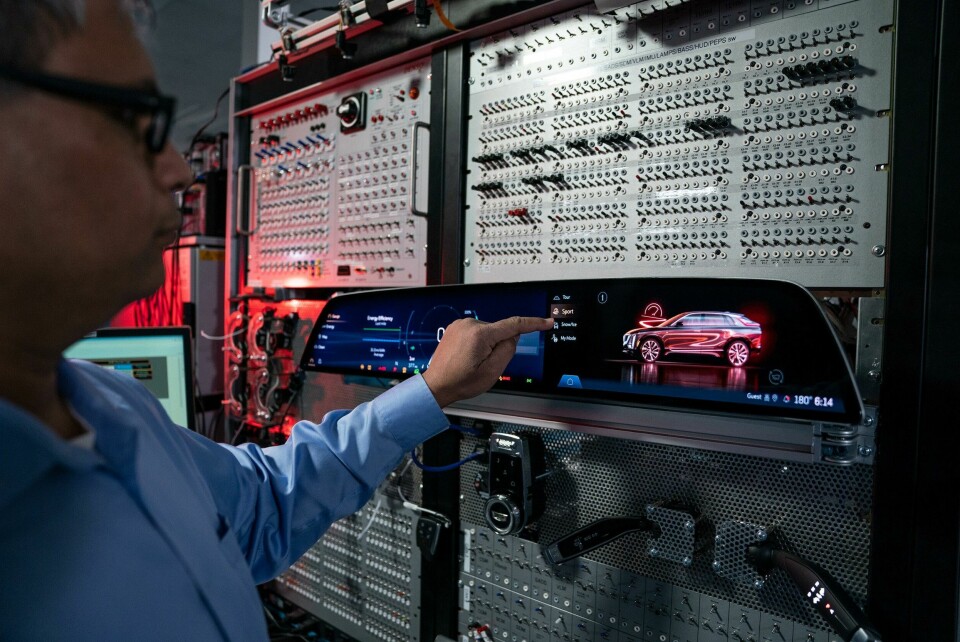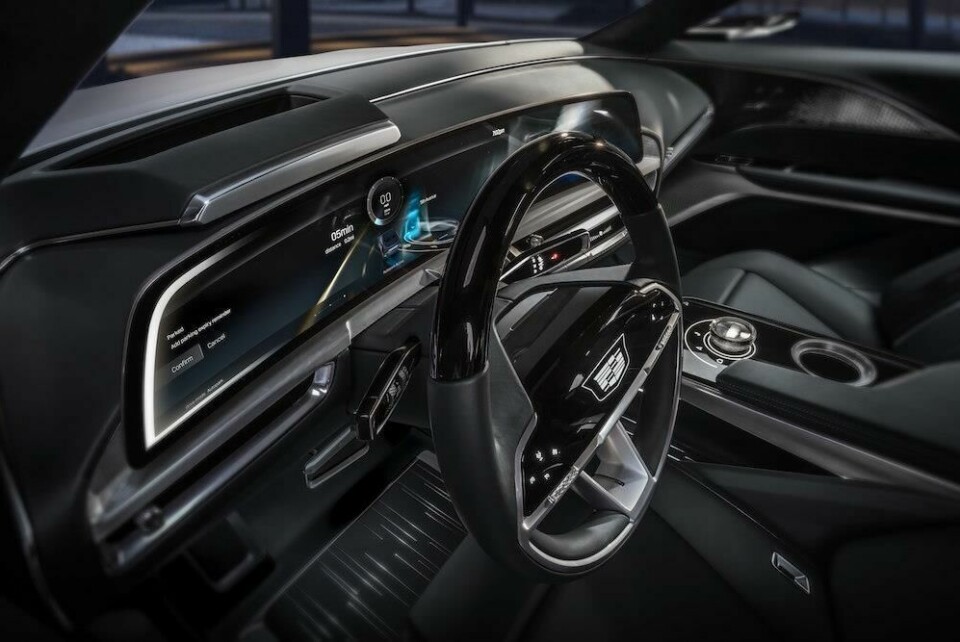
GM’s Sandy Lipscomb on future vehicle UX design
General Motors will soon introduce a new software platform, Ultifi, to enable greater levels of personalisation and a more connected user experience. Car Design News caught up with Sandy Lipscomb, senior manager for GM’s Ultifi design team, to find out more
At the end of 2021, GM announced plans to introduce Ultifi, a new end-to-end software platform that will launch in 2023.
The platform allows for new and updated content to be pushed into interfaces during the entire course of a vehicle’s lifetime. It will also help GM to react to market requirements faster, and will greatly enhance personalisation for each and every driver and passenger. In this interview, CDN contributor Michael Nash sits down with Sandy Lipscomb, senior manager for GM’s Ultifi design team, to find out more.
Car Design News: What areas of UX does your team cover?
Sandy Lipscomb: We are responsible for everything from soup to nuts – all the content that exists for every brand, every programme, and every model year. We see everything across the GM family. To make it happen, we have our own research lab and a growing team of strategists, visual designers and product designers. We also have a huge 3D asset team.

There are 136 people in the team at the moment. Our strategy arm is becoming increasingly important as we figure out who our customers really are, and make sure we create experiences to suit customer needs as they know them today, but also needs for several model years ahead.
CDN: What is the relationship like between your team and other teams that work on the interior of the vehicle?
SL: With every progamme and brand there is a different approach to the screen orientations. We need to work with those brand and programme teams so that the screens can accommodate the content we put there for our customers. In some cases there will be details that need to be negotiated, eking out a few millimeters here and there, rounding out this corner, or creating a touch area on this screen. It’s a pretty big task. What we end up doing is breaking it down into smaller pieces so we can attack them on a granular level, finding out which pieces are reusable, responsive, and which need to be unique to the brand or programme.
CDN: What exactly is the Ultifi platform? Does it have a physical manifestation, or is it a platform that will enable physical changes?
SL: The easiest way to consider Ultifi is as an operating system that delivers content over the ownership life of the vehicle. Your vehicle can change with you as your needs change, and it can be exciting over time. People will purchase a vehicle and, after four or five years, they become bored, or they don’t even think about it because it isn’t offering them anything new. Ultifi will change that – our customers will no longer have to wait to purchase a new vehicle to have a new vehicle experience. You will be able to change features, functionality, content and experience over the life of that ownership, and then hopefully take it with you to your next vehicle.
CDN: Is it all reliant on over-the-air (OTA) updates?
SL: Some updates will happen automatically and for free, but there will also be features that the customer can go into an App and purchase, just like on a phone. Ultifi is not just that though. It also unlocks the capability for us in the beginning whilst we are planning for the programme to create meaningful change and differentiators between programmes and brands. It is a more malleable system than we have had before. So, from the start, Sandy’s vehicle will be different from Michael’s vehicle, and then we can differentiate further over time.
An important part of what we do is the ‘wow’ factor, and making it a part of everything we do. It can’t just be one little feature that sits in the corner of a screen
CDN: What trends are impacting the features you intend to offer with Ultifi?
SL: Personalisation is the big one. The passenger experience is also becoming more relevant now as we have more autonomous features. Safety is still a top priority, of course, but my experience in the vehicle as a driver is completely different from my experience as a passenger. Most of the time, as a passenger, I’ll be asleep in the car which means I will need ways to calm my environment, make it quiet and turn off bright screens. That’s me, but another passenger might be completely different. So we have profile concerns, highlighting who people are, what they like and dislike, and where they are in the vehicle. It’s a granular level of personalisation.
There is also some level of prediction that needs to happen. What will people need now during their immediate travel, but also what will they need over time during their ownership of the vehicle? We are now thinking about all this and how to use interfaces to ensure our customers get what they need.
Another important part of what we are doing is the ‘wow’ factor, and making it a part of everything we do. It can’t just be one little feature that sits over in the corner of a screen. It really needs to be applied to the entire experience. So you can have a safety feature that is implemented in a wow way. You can have a trailering function that elicits a wow feeling. We want to make sure the experience is extremely engaging on all fronts. People should want to spend time in the vehicle not just because they have to in order to travel, but because they want to be there.

CDN: How important will artificial intelligence (AI) be?
SL: Some level of AI is necessary for sure, but there are so many things we can do that don’t require it. We are implementing what we call ‘smart controls’. We have the capability of bringing forward a control that would have previously been a physical knob somewhere but is now a digital button somewhere inside the system. For instance, we have a virtualised smart control for our glovebox release because we know that when the car goes into park, the driver or front passenger might need to go into the glovebox, so that control comes to the forefront. Another example is that the automatic high beams have been turned off, but we know that for safety they need to be on, so we bring that control to the front so that the driver doesn’t have to go digging in menus. It’s not AI, it’s situational common sense. It’s not very complicated, but it is very effective. People are getting the benefits of us being smart as to how we deliver content and bring controls forward. It’s improving the user experience, just a little bit, but it all adds up.
CDN: What is the biggest challenge of implementing Ultifi?
SL: From a customer perspective, privacy is a concern. We want to make sure that people feel comfortable and that they know we are using their information appropriately. And as we bring in more personalisation we will have a more detailed profile that we need to protect.
There is also the challenge of people learning autonomous features and getting comfortable. So, when we virtualise a control or make an interface for Super Cruise and Ultra Cruise, we understand our customers might be a little weary for the vehicle to take over in certain situations. We need to make it clear to them why the vehicle is acting the way it is, and comfort them. There is a trust element for which we are responsible.

CDN: Historically, GM’s UX has arguably lagged behind other major OEMs. Will Ultifi fix that?
SL: The time between when we do the work on a programme and when it is released is quite long. So sometimes we think ‘dang it, I wish we had changed that.’ We don’t have to think like that anymore because with Ultifi we can go in and make the change, so for us as designers it’s very freeing.
Today when you get a GM vehicle the screens are all operating with a different system, and they don’t talk to one another very easily. We will be able to make that communication now between screen interfaces and have less of a division between where content is shown because they are all running on the same OS. That is a game changer for us. And it is increasingly important because there are more screens, sometimes five or six screens in the vehicle, and they all need to feel like they are connected.
The team hasn’t stopped growing over the past couple of years, and I don’t see it slowing down anytime soon
It is also about improving speed-to-market. We can work and make updates and improvements much quicker. There is some catching up for us to do because we are a big company and not a start-up, but we will be able to be faster. And the differentiators between brands and programmes will be clear. Some programmes might need a more traditional interface, while others could be more experimental and we can get them to the customers and get some feedback.
CDN: Where do you see vehicle design headed when it comes to software?
SL: The team hasn’t stopped growing over the past couple of years, and I don’t see it slowing down anytime soon. There will be more focus on strategic initiatives and how to work through customer input, as well as looking at customer expectations for the future. We have experiences that are different for everybody. We’re not going to have that same baseline experience that we can test against and get millions of people responding.
We are going to be taking in feedback from everywhere and getting really granular with profile, understanding how this experience needs to change for each person specifically. It’s a super big challenge, and our analytics will need to catch up. And then it’s about how these granular experiences tie together as a system; if everyone’s experience is different, we need to stay focused on making sure it feels like it is coming from one place.



